Inside the food baskets of Bangladesh
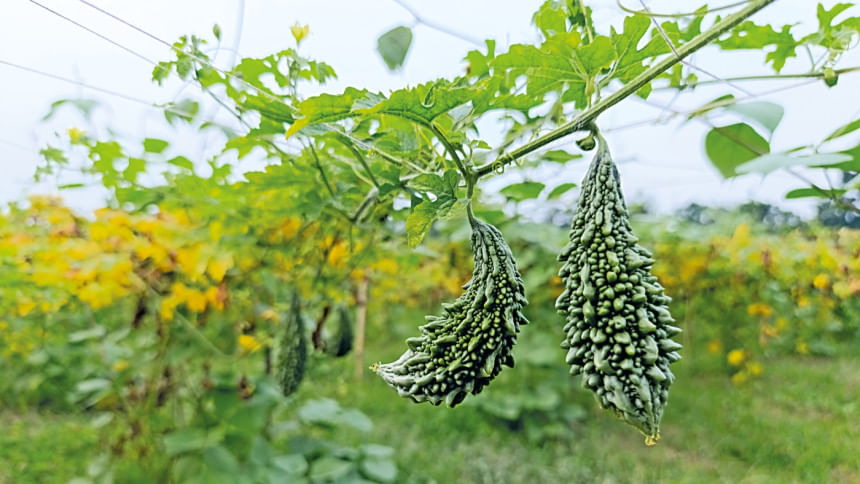
From the sun-baked paddy fields of the northwest to the mango orchards of Rajshahi and the vegetable fields of Rangpur, the country's agricultural heartlands are evolving. Once dominated by rice, these "food baskets" are now producing a growing mix of grains, fruits and vegetables -- defining the country's rural economy and the plates of millions.
Is there any part of Bangladesh untouched by agriculture? Perhaps not, unless one counts the concrete expanses of cities like Dhaka. Even that is debatable. In the capital, as in other towns, rooftop gardens brim with fruit trees, tomato vines and brinjal plants.
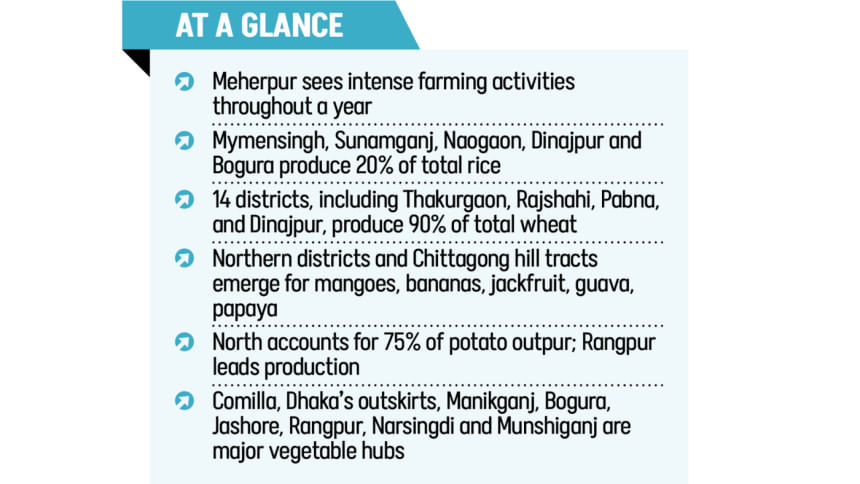
Across the countryside, cultivation is not a pastime but a way of life. Certain districts have become major suppliers for the rest of the country, producing rice, maize, wheat, potatoes and vegetables in volumes large enough to feed cities, including Dhaka, home to nearly 2 crore people.
Today, anyone visiting the western and northwestern districts can see the changes in cropping patterns. Large paddy fields still dominate, but they now share space with vegetables, fruit orchards, and maize. This shift is part of a gradual diversification. Fields that once grew a single crop for most of the year now produce two or three.
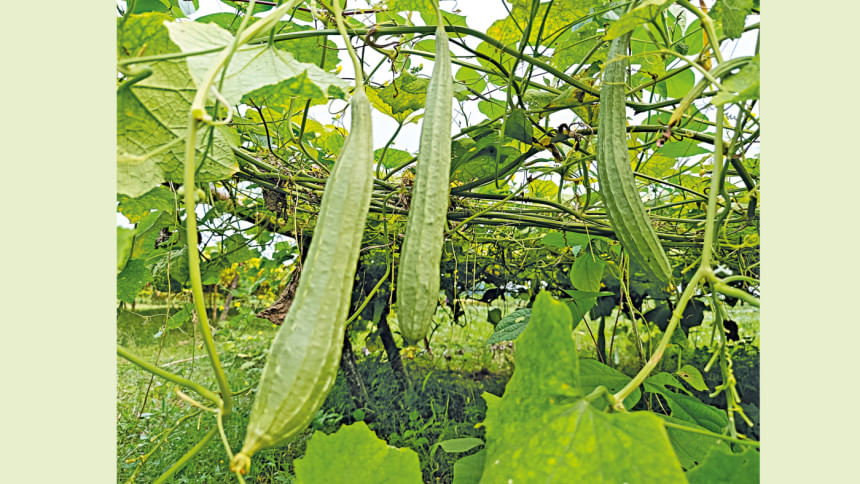
Cropping intensity, or the number of crops grown on the same land in a year, has risen from 171 percent in the early 1980s to about 200 percent today.
In Meherpur, a district on the western border, the figure is 278 percent, according to the Bangladesh Bureau of Statistics (BBS). In neighbouring Chuadanga, it is 265 percent.
"Once we had two crops a year. Now we grow three. Some farmers grow two rice crops and maize, while some grow rice and vegetables," said Wasim Royel, a farmer from industrial township Darshana of Chuadanga.
The major change took place in the last 15 years. "Availability of hybrid seeds has been the major driver for increasing cultivation. Now, no one keeps their land fallow."
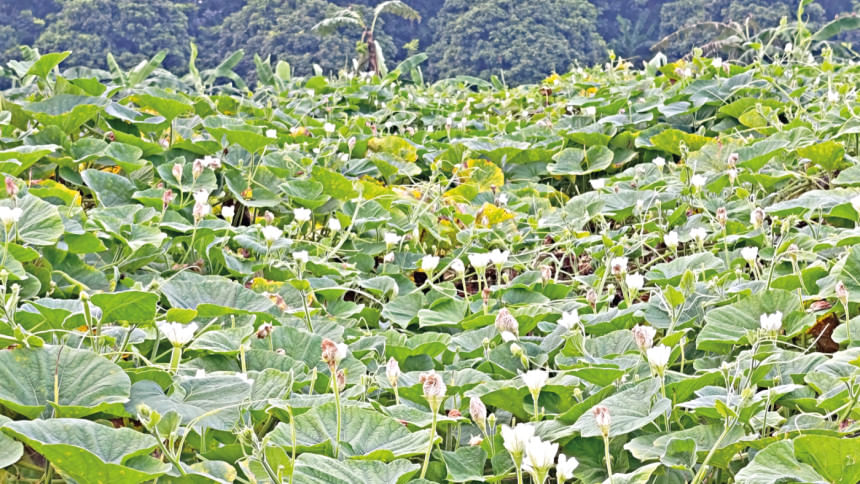
According to Royel, rice can be harvested in 90 days on average now, leaving time for maize, which takes 130 days, and vegetables. "In Meherpur, you will see that vegetables are grown throughout the year."
Irrigation has been another key factor.
"The breakthrough in farming in our area came after the introduction of irrigation and affordable shallow tube well pumps," said Samadul Islam, a 50-year-old farmer of Meherpur district.
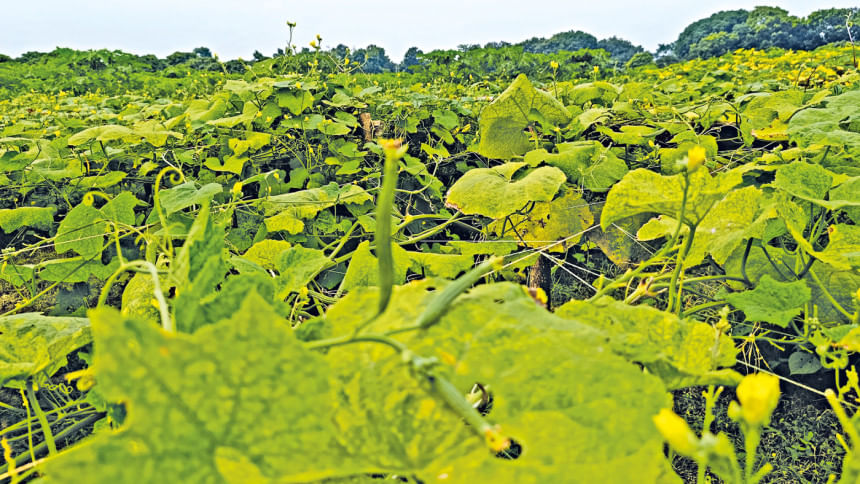
"In my childhood, only one crop was grown in a vast area. Now we can safely cultivate three crops a year," he said. The district's higher land also helps, with less waterlogging and earlier planting.
Bangladesh has about 45.93 lakh acres of triple-cropped land out of 3.93 crore acres of gross cropped area, the total sown once or more in a year. Some regions now specialise in particular crops, shaped by climate, soil and infrastructure.
RICE
Five northern districts -- Mymensingh, Sunamganj, Naogaon, Dinajpur and Bogura -- produce nearly a fifth of the national rice harvest across Aus, Aman and Boro seasons, said Mohammad Khalequzzaman, director general of the Bangladesh Rice Research Institute (BRRI).
Mymensingh district is the largest Boro producer, contributing 5 percent of total output, followed by Sunamganj, Naogaon, Netrokona, Bogura, Jashore and Dinajpur. Sunamganj accounts for 4.5 percent of total Boro rice, the main dry-season crop, which yielded an estimated 2.10 crore tonnes in the fiscal year 2023-24.
"Historically strong in Aman rice, Dinajpur is now expanding into Boro. The northwest bordering district alone contributes 5 percent of total rainfed Aman rice," said Khalequzzaman.
"These areas have become major rice producers due to favourable soil, stable weather patterns and relatively low risk of natural disasters like droughts and floods," said the BRRI DG.
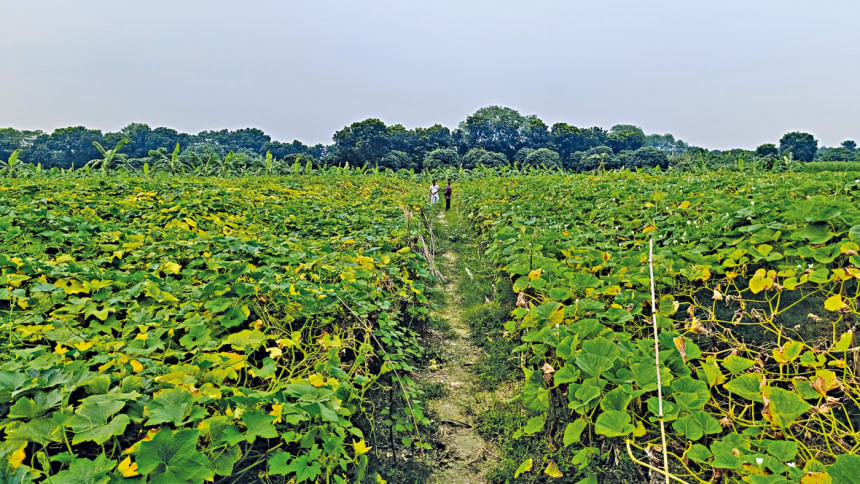
MAIZE
Maize, barely grown a generation ago, is now Bangladesh's second-largest grain, with about 46 lakh tonnes produced annually. Chuadanga accounts for over a tenth of the total. Dinajpur leads in volume, and Rangpur division produces more than half the national harvest.
"Farmers are increasingly opting for crops with better returns, signalling a shift in these historically rice-dominant regions," said Khalequzzaman.
In parts of Dinajpur, maize has replaced paddy in response to rising demand from poultry and aquaculture feed industries.
"Maize production is also concentrated in Manikganj, Rajshahi, Jamalpur and Natore. Twelve areas, including Chuadanga district and the Rangpur division, account for around 80 percent of total maize output," said Muhammad Rezaul Kabir, senior scientific officer at the Bangladesh Wheat and Maize Research Institute.
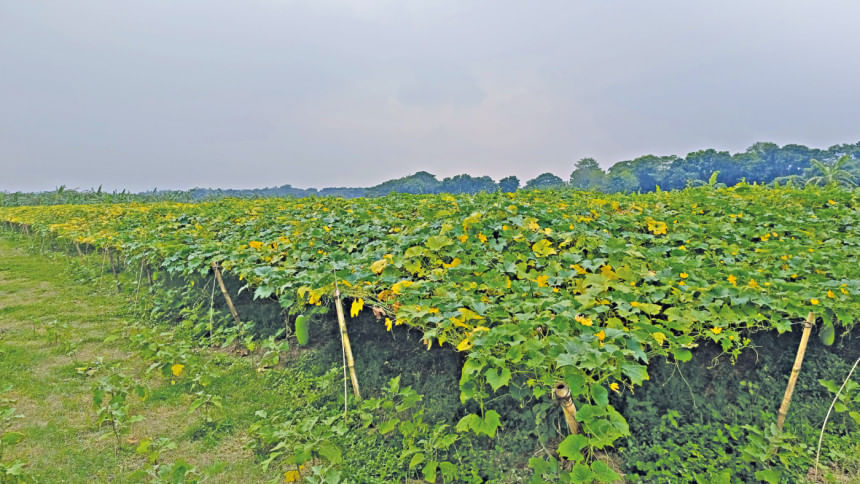
WHEAT
Wheat is mainly grown in Thakurgaon, Chapainawabganj, Natore, Rajshahi, Pabna, Faridpur, Naogaon, Panchagarh, Meherpur, Kushtia, Rajbari, Bhola, Kurigram and Dinajpur.
These districts produce about 90 percent of the crop.
"These areas benefit from cooler, drier winters, fertile loamy soil, reliable irrigation and a long tradition of cereal farming," Kabir said.
FRUITS
Fruit production is shifting north and to the Chittagong Hill Tracts, said Md Mosiur Rahman, principal scientific officer at the Bangladesh Agricultural Research Institute's fruit division.
"Rajshahi, Natore, Naogaon and Chapainawabganj excel in mangoes, lychees, guavas, bananas and papayas. The Hill Tracts, once dominated by jhum, are seeing systematic orchards of jackfruit, bananas, pineapples and even mangoes," he said.
In Rajshahi and Naogaon, groundwater levels and soil suit fruit production, especially mangoes. In the hills, higher ground reduces root-level waterlogging. Land once marginal is now being used commercially, with large-scale orchards replacing homestead cultivation in parts of Natore and the Hill Tracts, he added.
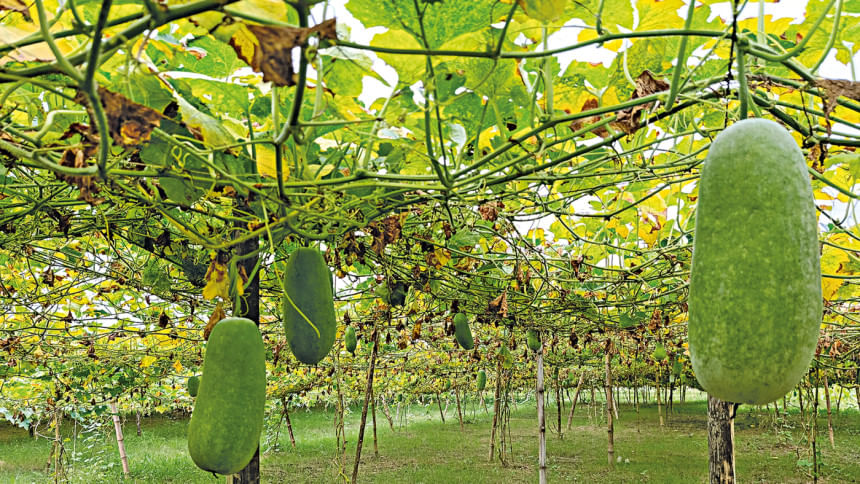
Higher profitability and access to hybrid seeds, many from India, have spurred mango cultivation in Naogaon, said BRRI DG Khalequzzaman.
Newer fruits are also gaining ground. Dragon fruit is now among the top six in national output. Guava, once a minor crop, is widely grown and helps reduce reliance on imported apples.
According to official data, the top five fruits by volume are banana, jackfruit, mango, guava and papaya. Bananas remain the leader, though seasonality is a challenge.
"Most fruits are produced between April and August, which limits year-round supply," Rahman said. "The processing industry needs crops like bananas, lemons, guavas and certain mango or jackfruit varieties that can be grown all year."
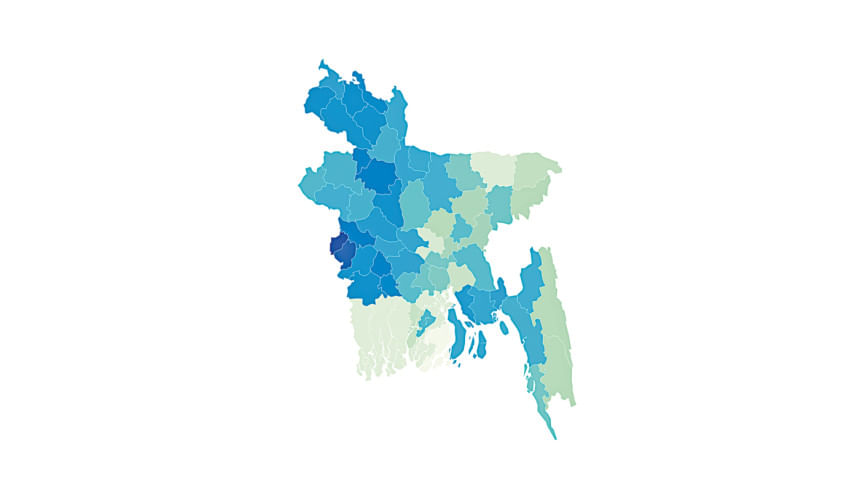
NORTH: THE NATION'S FOOD BASKET
Md Akhtar Hossain Khan, chief seed technologist at the Ministry of Agriculture, calls the north the nation's food basket.
"Vegetables, fruits and high-value crops dominate there, alongside substantial rice and wheat cultivation," he said.
Rangpur district is the largest potato producer, followed by Dinajpur, Bogura and Joypurhat. Together, the northern districts grow three-fourth of the country's 1.15 crore tonnes of potatoes each year.
Barishal leads in pulses, while Noakhali is emerging in soybean. "We are seeing a shift from homestead farming to commercial-scale production," Khan said.
Mahbub Anam, managing director of Lal Teer Seeds Ltd, said rice is the backbone of the food basket, followed by potatoes.
He said, "Vegetables form a crucial part of the diet, and production has surged over three decades due to hybrid varieties and better seeds."
In the late 1990s, hubs such as Cumilla, the outskirts of Dhaka, Bogura, Gaibandha and Jashore supplied about half the national vegetable market. Production has since spread to Rangpur, Munshiganj, Narsingdi, Barishal, Sylhet, Bhola, Chattogram and Manikganj.
"These 13 districts now produce about 75 percent of vegetables," Anam said.
Some crops have found new strongholds. "Godagari in Rajshahi has seen a boom in tomatoes. Onion cultivation has expanded to Pabna and Manikganj. Papaya and taro have moved from household gardens to commercial plots. Watermelon, once confined to Kaptai, is now grown from Panchagarh to coastal Patuakhali and even Sylhet," he added.
Flat beans, once a Pabna speciality, are now grown in Sylhet. Crop rotation, he noted, is becoming essential to protect soil health.
'DON'T SEE AGRI OFFICIALS'
Yet the abundance of production brings its own concerns. Farmers like Royel and Islam acknowledge that increased cultivation has raised incomes and improved living standards, but prices are volatile.
"When we get better prices, our hard work pays off," Royel said. "But when prices fall, we lose interest. There is no guarantee we will get a fair price."
A lot depends on the mercy of the weather, too.
Heavy rains this season damaged Royel's fields and Islam's banana orchard. Both say they rarely see agricultural extension officers.
"We don't see them in our fields," Royel said. "Farmers would be encouraged if they visited and advised us on new technology."
Islam raised another issue. "Pesticides are weak. We have to spray twice a day on crops like brinjal. We are being cheated."
"The government should know that if we cannot produce food, national food security is at risk," he said.


 For all latest news, follow The Daily Star's Google News channel.
For all latest news, follow The Daily Star's Google News channel. 



Comments